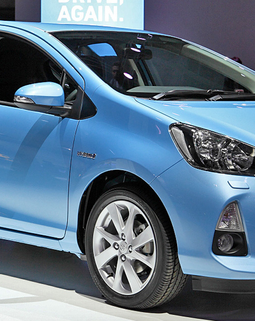Introduction
The automobile sector in Bangladesh has undergone significant transformations in recent years, fueled by both challenges and prospects. This article delves into the landscape of this industry, examining the hurdles it faces and the opportunities that lie ahead.
Current State Of The Automobile Sector
In Bangladesh, the automobile sector has witnessed a remarkable surge in demand, driven primarily by economic growth and urbanization. However, this growth is juxtaposed with challenges such as inadequate infrastructure, high import duties, and regulatory complexities.
Challenges Facing The Industry
Infrastructure Limitations: The inadequate road infrastructure in Bangladesh poses a significant challenge to the automotive sector's growth. Poor road conditions not only impede transportation but also increase maintenance costs for vehicles. Addressing this issue requires substantial investment in road construction and maintenance projects. Moreover, modernizing transportation systems and implementing smart infrastructure solutions can enhance efficiency and reduce congestion.
High Import Duties: The imposition of high import duties on automotive parts and vehicles has inflated their prices, making them less affordable for the general populace. This hampers the industry's expansion and accessibility. To mitigate this challenge, the government could consider revising import duty structures or providing incentives for local production. Additionally, fostering domestic manufacturing capabilities can reduce dependence on imports and bolster the economy.
Regulatory Complexities: Complex regulatory frameworks often deter potential investors and hinder the ease of doing business in the automotive sector. Streamlining regulations and enhancing transparency are crucial for fostering industry growth. Implementing clearer and more efficient regulatory processes can encourage both domestic and foreign investment. Furthermore, promoting collaboration between government agencies and industry stakeholders can lead to more effective policy formulation and implementation.
Prospects And Opportunities
Rising Demand: Despite the challenges, the automotive sector in Bangladesh holds immense potential due to the rising demand for vehicles. As disposable incomes increase and consumer preferences evolve, there is a growing market for automobiles. This presents opportunities for both domestic and international automakers to tap into the burgeoning market. By offering diverse product offerings and catering to evolving consumer needs, companies can capitalize on this expanding market.
Investment Opportunities: Bangladesh presents lucrative investment opportunities in the automotive sector, particularly in manufacturing and assembly plants. Strategic partnerships and foreign investments can contribute to technology transfer and skill development. Moreover, investing in research and development can lead to the creation of innovative and sustainable automotive solutions tailored to the local market. Encouraging investment in green technologies and electric vehicles can also contribute to environmental sustainability and mitigate carbon emissions.
Conclusion
The automobile sector in Bangladesh is at a crossroads, grappling with challenges while brimming with opportunities. Overcoming infrastructure limitations, addressing regulatory complexities, and reducing import duties are imperative for unleashing the full potential of this industry. With concerted efforts from stakeholders and supportive government policies, Bangladesh can emerge as a hub for automotive manufacturing and innovation, driving economic growth and prosperity.





